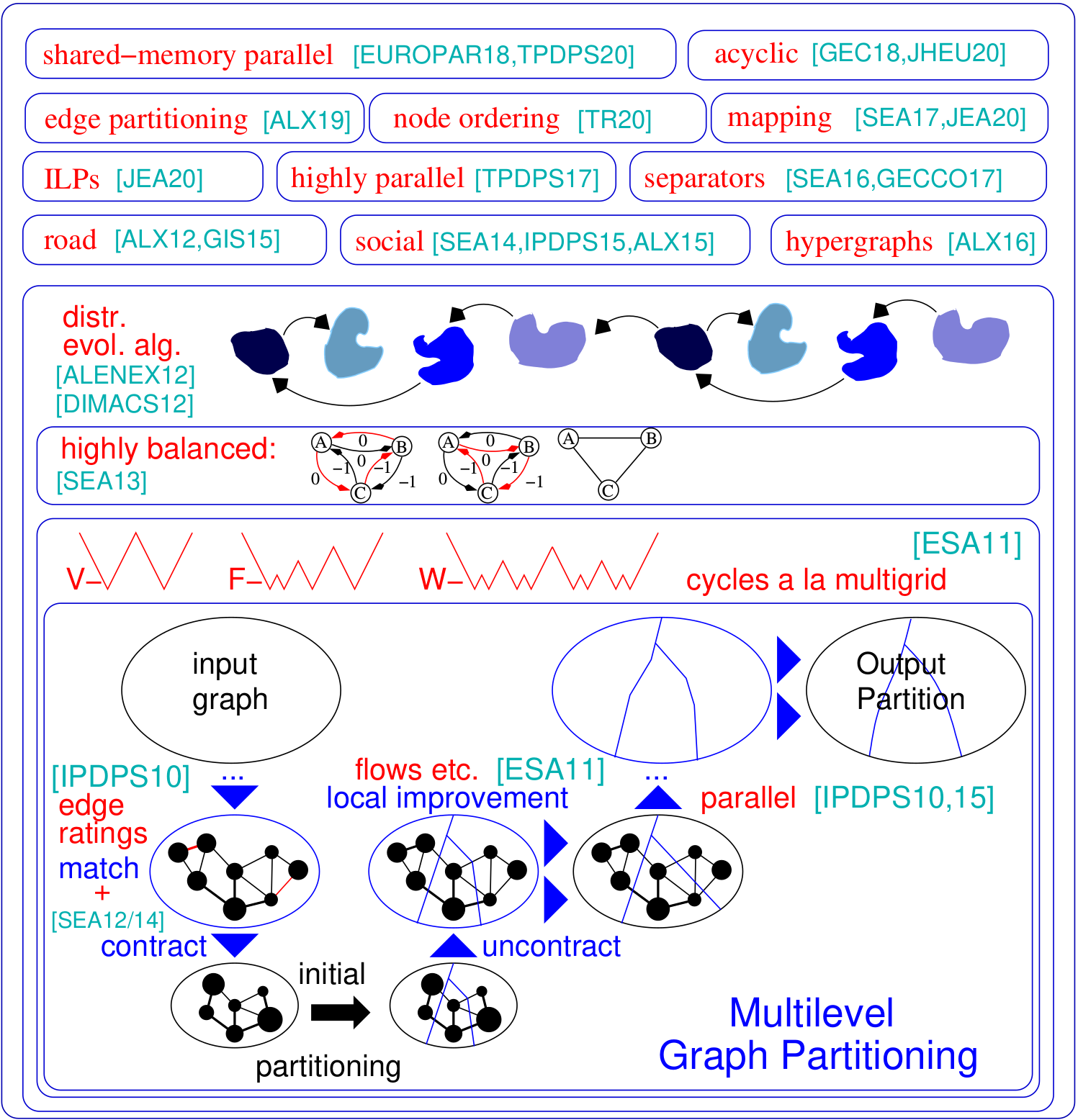Engineering Data Reduction for Nested Dissection
Many applications rely on time-intensive matrix operations, such as factorization, which can be sped up significantly for large sparse matrices by interpreting the matrix as a sparse graph and computing a node ordering that minimizes the so-called fill-in. In this paper, we engineer new data reduction rules for the minimum fill-in problem, which significantly reduce the size of the graph while producing an equivalent (or near-equivalent) instance. By applying both new and existing data reduction rules exhaustively before nested dissection, we obtain improved quality and at the same time large improvements in running time on a variety of instances. Our overall algorithm outperforms the state-of-the-art significantly: it not only yields better elimination orders, but it does so significantly faster than previously possible. For example, on road networks, where nested dissection algorithms are typically used as a preprocessing step for shortest path computations, our algorithms are on average six times faster than Metis while computing orderings with less fill-in.
PDF Abstract